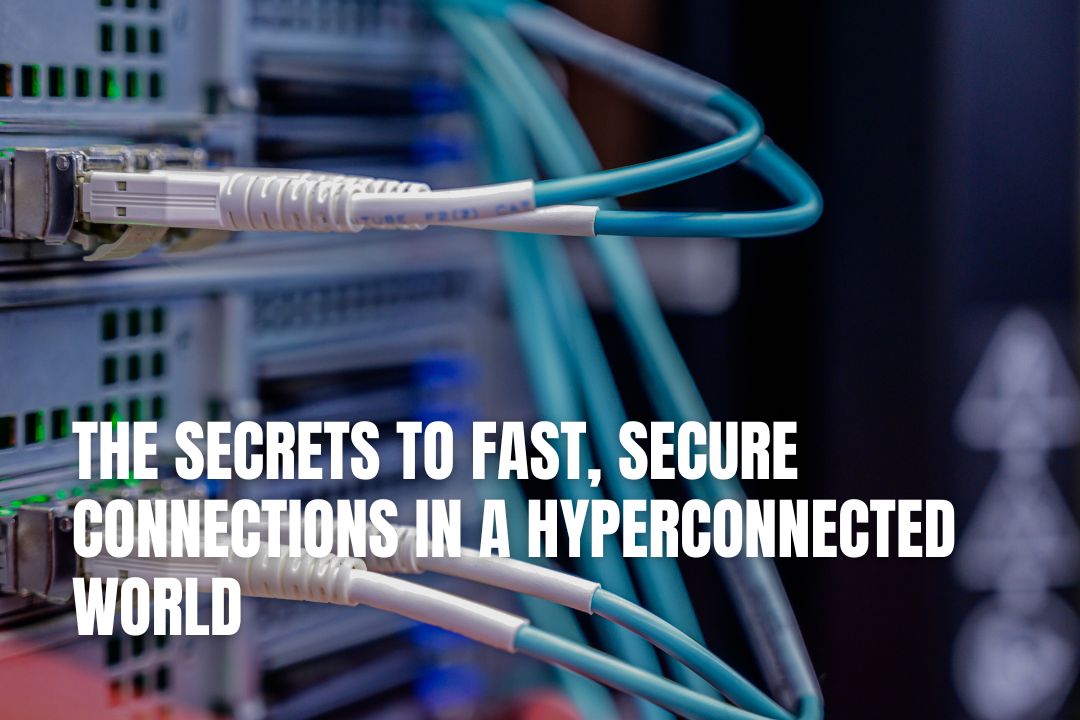
The modern world depends on fast, reliable, and secure digital connections. Businesses operate across multiple platforms, employees collaborate globally, and customers expect seamless online experiences. Every transaction, message, and download relies on a network that can move data quickly without compromising safety. As digital demand continues to rise, organizations must adopt smarter infrastructure that keeps pace with change. Strong connectivity is no longer a luxury; it defines efficiency, productivity, and trust in a hyperconnected world.

Connectivity drives innovation across industries. Video conferencing, data sharing, and cloud applications require high bandwidth and low latency to function effectively. When networks lag or fail, operations slow, and productivity declines.
Enterprises depend on real-time access to tools, analytics, and resources. Employees expect instant file transfers and uninterrupted communication. Customers demand consistent digital experiences across devices. Slow connections reduce engagement and lead to financial loss.
Modern networks must deliver both speed and stability. Organizations can no longer rely on traditional systems that prioritize one over the other. Fast, secure, and flexible infrastructure ensures every user and device remains connected without compromise.
Legacy network systems, once dependable, now struggle to handle the complexity of global communication. Traditional WANs route all traffic through centralized data centers, creating bottlenecks. As cloud computing and remote work expand, this approach no longer meets performance or security expectations.
Businesses require decentralized models that distribute traffic efficiently and securely. Intelligent routing adapts automatically to shifting demands, ensuring that bandwidth serves the most critical applications first. This dynamic structure improves performance while maintaining control. Organizations exploring modern network options often discover the advantages of using SD-WAN security to balance speed with protection. This approach combines intelligent traffic management with built-in safeguards, reducing delays and preventing breaches simultaneously. The result is a faster, more resilient system that meets the digital standards.
Automation and intelligence define modern connectivity. Smart networks analyze data in real time to predict usage patterns and allocate resources accordingly. They monitor traffic flow, detect anomalies, and make instant adjustments to prevent downtime.
This level of insight provides proactive management rather than reactive problem-solving. IT teams receive immediate alerts for performance issues or security risks, allowing rapid response. Intelligent systems maintain performance even during high-demand periods.
Artificial intelligence continues to shape how networks evolve. Machine learning models forecast future capacity needs and recommend optimizations. This adaptability ensures scalability while minimizing operational strain. Intelligent networks operate as living systems that learn and improve continuously.
Speed attracts attention, but security sustains trust. The more connected an organization becomes, the higher its exposure to potential threats. Cybercriminals target weak entry points, exploiting vulnerabilities across cloud services, mobile devices, and IoT networks.
Modern security integrates seamlessly with performance strategies. Encryption, traffic segmentation, and identity verification protect sensitive data without slowing operations. Zero-trust frameworks validate every connection, ensuring users access only what they need.
Businesses must adopt layered defenses that adjust dynamically. Smart security tools recognize abnormal patterns and neutralize threats before they spread. The challenge lies in achieving this protection while maintaining agility. Well-designed networks deliver both through synchronized architecture.
The rise of remote and hybrid work has redefined connectivity needs. Employees access corporate networks from homes, shared workspaces, and mobile devices. Without strong security, these endpoints create risks that affect entire systems.
Flexible networks allow seamless access to business resources while maintaining consistent protection. Secure VPNs, multi-factor authentication, and identity-based permissions safeguard remote connections. Intelligent traffic routing ensures that every user experiences equal speed and reliability, regardless of location.
Collaboration platforms, video calls, and cloud software perform best under balanced load distribution. Businesses with agile connectivity experience fewer disruptions and greater engagement among remote teams.
Cloud technology has become central to business operations. Applications like CRM systems, data analytics platforms, and content management tools require continuous access to cloud servers. Traditional routing often causes latency, reducing responsiveness and user satisfaction.
Modern architectures allow direct cloud access through optimized pathways. This minimizes delay and maximizes efficiency. Intelligent traffic prioritization ensures mission-critical applications always receive the bandwidth they require.
Cloud-first strategies support scalability and resilience. Businesses expand effortlessly as their digital footprint grows. Smart routing prevents overloads and improves uptime across global networks.
Understanding network activity enhances both performance and protection. Complete visibility enables administrators to identify inefficiencies, detect intrusions, and manage resources strategically. Without transparency, problems remain hidden until they cause disruption.
Centralized dashboards allow teams to monitor activity across multiple sites and devices. This unified view simplifies management and speeds decision-making. Automated reports track performance metrics, helping organizations plan upgrades before demand outpaces capacity.
Clear visibility also strengthens compliance. Businesses handling sensitive data can demonstrate accountability and transparency through continuous monitoring and documentation.

Fast and secure connections shape the foundation of modern life. In a hyperconnected world, businesses thrive when their networks deliver agility, protection, and speed. Intelligent systems powered by automation, visibility, and adaptability keep data moving efficiently while safeguarding every interaction. As digital demand grows, the path forward lies in smarter, more responsive architectures. The enterprises that invest in advanced connectivity today position themselves to lead tomorrow, achieving both innovation and stability in every connection they make.
Traditional networks often route all traffic through a single, centralised data centre. This approach creates significant bottlenecks and latency, especially with the heavy use of cloud applications and a distributed workforce. They weren't designed for the high volume and complexity of modern digital traffic.
Modern networks achieve this by integrating security directly into their architecture. Instead of adding security layers that slow things down, they use methods like traffic segmentation, zero-trust validation, and intelligent threat detection. This ensures data is protected without compromising performance.
Network intelligence refers to using automation and artificial intelligence to manage network resources proactively. An intelligent system analyses traffic patterns in real time, predicts future needs, and automatically adjusts to prevent downtime and optimise performance, ensuring critical applications always have the bandwidth they need.
They provide secure and consistent connections regardless of location. Using tools like secure VPNs, multi-factor authentication, and intelligent load balancing, these networks ensure remote staff have the same reliable access to company resources as in-office employees, which is vital for productivity and collaboration.
Complete visibility gives you a unified view of your entire network's health and activity. It allows your IT team to spot performance issues, identify potential security threats, and manage resources more strategically. Without this transparency, problems can go unnoticed until they cause a major disruption.